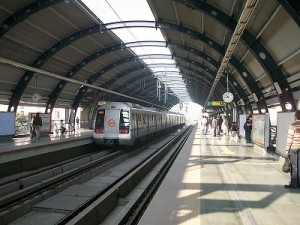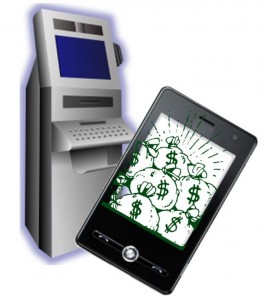Commuters who are using the two train lines in India will be able to use cell phones to buy tickets.
A new mobile ticketing system will soon be launched to make it possible for commuters in Haryana, India, who travel between Palwal and New Delhi to be able to purchase their unreserved tickets by way of cell phones.
All that is required is a smartphone and the appropriate mobile app and the user can buy tickets on the device.
This mobile ticketing program will be implemented as of August and is a component of a broader strategy to convert unreserved tickets into a paperless system. It is also meant to help to reduce the need to stand in line and purchase those tickets. This system will be available to users of Android or Windows based smartphones. All they need to do is download the free Unreserved Ticketing System (UTS) app.
With the app, the mobile ticketing features become available to the device user who can display their ticket to officials.
 The railway ticket can be purchased through the use of a credit or debit card that is entered into the application. With the UTS app, commuters who are asked to show their tickets by railway officials can simply display the information on their mobile device screen.
The railway ticket can be purchased through the use of a credit or debit card that is entered into the application. With the UTS app, commuters who are asked to show their tickets by railway officials can simply display the information on their mobile device screen.
This app makes it possible to buy a paperless ticket for a destination anywhere along the Delhi-Palwal section of railway, which spans 32 miles. Along this stretch, there are 15 different stations, including Nizamuddin, Tughalakabad, Faridabad and Ballabgarh. All of those stations will be covered by the paperless mobile tickets service.
The system was created by the Centre for Railway Information Systems (CRIS) “utsonmobile”. The mobile app can be downloaded from either the Google Play store or the Windows Store, as appropriate. Once it has been installed, it walks the user through all of the required steps for making the ticket purchase, on-screen.
That said, despite the fact that the hope is that the majority of commuters will use the mobile ticketing system, the traditional ticket windows will still be available to travelers who wish to buy paper tickets.
Recent data released by the Halifax Bank of Scotland revealed that this preference is maintained in-branch.
The most recent indication that mobile banking is becoming increasingly popular and that the traditional form of banking by lining up and speaking to a human teller is on its way out, has now been released in the form of some interesting data from Halifax Bank of Scotland.
What it showed is that customers would rather use their smartphones or an ATM than speak to staff.
In fact, that preference is strong enough that customers would still rather use mobile banking or an automated machine, even when they’re in a bank branch. The vast majority of interactions that customers have with their banks are over devices such as smartphones, tablets, laptops, and automated teller machines. In the branches, themselves, over half of the visits will include the use of one of the self service machines in order to pay using checks or cash. These are frequently chosen over the opportunity to speak with the human cashiers and other staff members.
Usually, mobile banking and other automated services are selected unless more detailed assistance is needed.
 It appears that consumers would prefer to use devices whenever possible, and that staff members are consulted only when complex products (such as mortgages, for example) or detailed financial advice is required.
It appears that consumers would prefer to use devices whenever possible, and that staff members are consulted only when complex products (such as mortgages, for example) or detailed financial advice is required.
Online accounts are accessed by mobile devices and laptops far more frequently than branch visits are made. In fact, the data from Halifax showed that it had experienced 69 million interactions with consumers throughout the month of June, at a daily average of 2.3 million. This is an increase of 47 percent over the same month, the year before. This indicates that not only are people choosing to access their accounts online, but they’re accessing them more frequently than ever4 before.
Among those interactions, a massive 57.2 percent were made over the mobile banking app, as consumers increasingly use their smartphones and tablets for making payments and checking balances while they’re on the go. Another 29.4 percent used desktops and laptop computers to do the same thing. Only a tiny 10.3 percent of the interactions were actually branch visits and an even smaller 3 percent contacted their bank by phone.
 The railway ticket can be purchased through the use of a credit or debit card that is entered into the application. With the UTS app, commuters who are asked to show their tickets by railway officials can simply display the information on their mobile device screen.
The railway ticket can be purchased through the use of a credit or debit card that is entered into the application. With the UTS app, commuters who are asked to show their tickets by railway officials can simply display the information on their mobile device screen.
 It appears that consumers would prefer to use devices whenever possible, and that staff members are consulted only when complex products (such as mortgages, for example) or detailed financial advice is required.
It appears that consumers would prefer to use devices whenever possible, and that staff members are consulted only when complex products (such as mortgages, for example) or detailed financial advice is required.